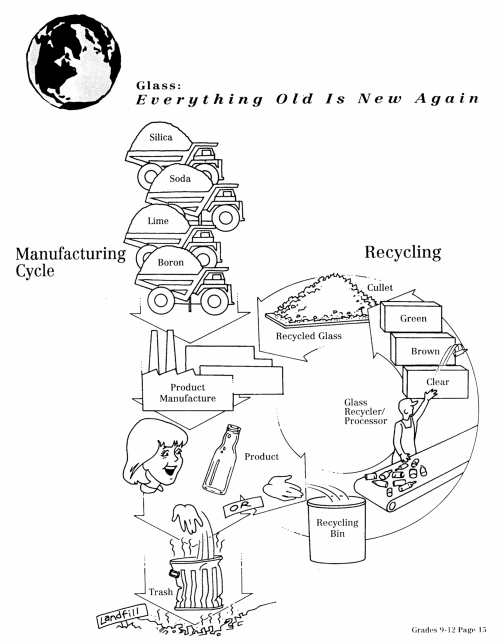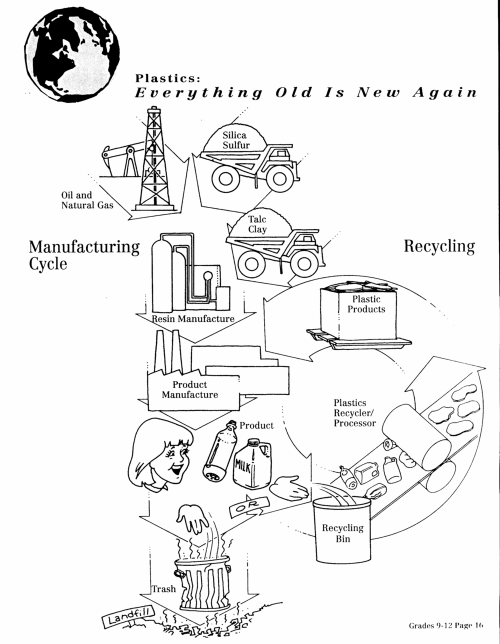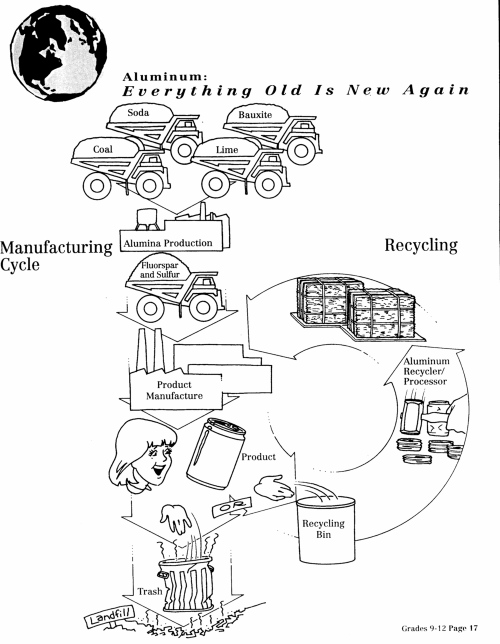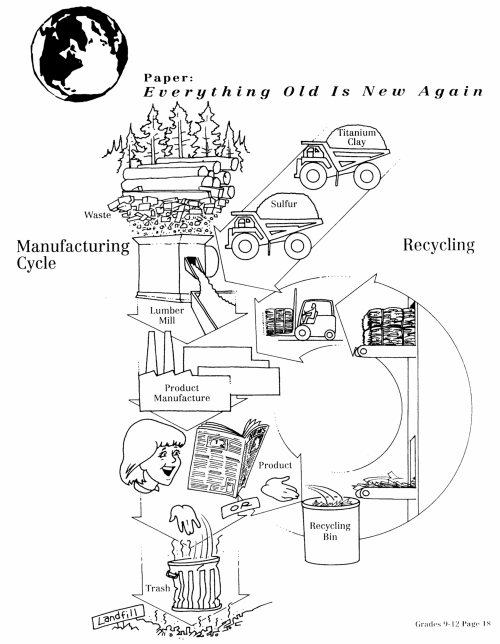
Return To Secondary Lesson Plans
Click here for a printable version
Title: Reclamation and Recycling
Level:
Secondary
Day/Time: 3 Activities, 1 class period each
KERA Goals: 2.2, 2.3
Objectives:
Each activity is designed to be completed in 1-2 classroom periods.
Background Information:
Operating a mine is a lengthy and expensive process. The property chosen for a mine site must have a deposit rich enough to offer profit to the miners. Expenses include testing and permitting, equipment purchases, operating personnel, and reclamation management.
Through reclamation projects, modern miners return mined land to a useful or better condition. They replace mine sites with wildlife habitats, recreation areas and other developments. When the land is reclaimed, it's hard to tell the mine site ever existed. Reclamation specialists work with state and federal agencies to plan the projects.
Recycling is another key to better managing our mineral resources. Because of the rising price of gold and silver, it is now economical to go back and re-mine some old mining areas. Miners also reuse many of the solutions used in processing minerals and constantly recycle water used in their operations. All of us, as consumers, can help conserve our mineral resources by recycling and reusing the many mineral products that we use each day.
Activity 1: My Habitat is Your Habitat
Materials:
My Habitat Is Your Habitat Student Handout
Activity 2: Everything Old Is New Again (2 class periods)
Materials:
Everything Old Is New Again student handouts
Use It Today... Reuse it Tomorrow student worksheets
Activity 3: Reclamation
Reclaim your own area of the school. Is there an unsightly area on the playground or school yard that could be reclaimed? Maybe it's a hole where a piece of playground equipment used to stand, or barren dirt where grass could grow. Your reclamation project could be as simple as planting grass seeds and putting a fence around the area, or maybe the class could pitch in and plant a tree or some flowers. Just like on real reclamation sites, this task will require some planning. If you are planting, make sure the species is native to the area and that you plant and fertilize it properly.
Recycling: Use It Today...Reuse It Tomorrow Worksheet




Recycling: Use It Today... Reuse It Tomorrow
Whether your family drops it off or has it picked up at the curb, many of us are now separating our garbage and recycling it. But sometimes we forget that things we throw away could be reused. Like a piece of paper. Did you write on both sides of it before throwing it away? How about your sandwich? Did you toss out leftover bread crumbs for hungry birds? Make a list of everything you throw away in one day, and then note if it could be recycled of reused. Your garbage might be worth something after all!
| Item | Recyclable | Reusable | Mineral? |
Example:
| Item | Recyclable | Reusable | Mineral? |
| Soda Can | X | X | |
| Paper | X | X | X |
| Candy Wrapper | X |
Provided by Caterpillar, Inc.